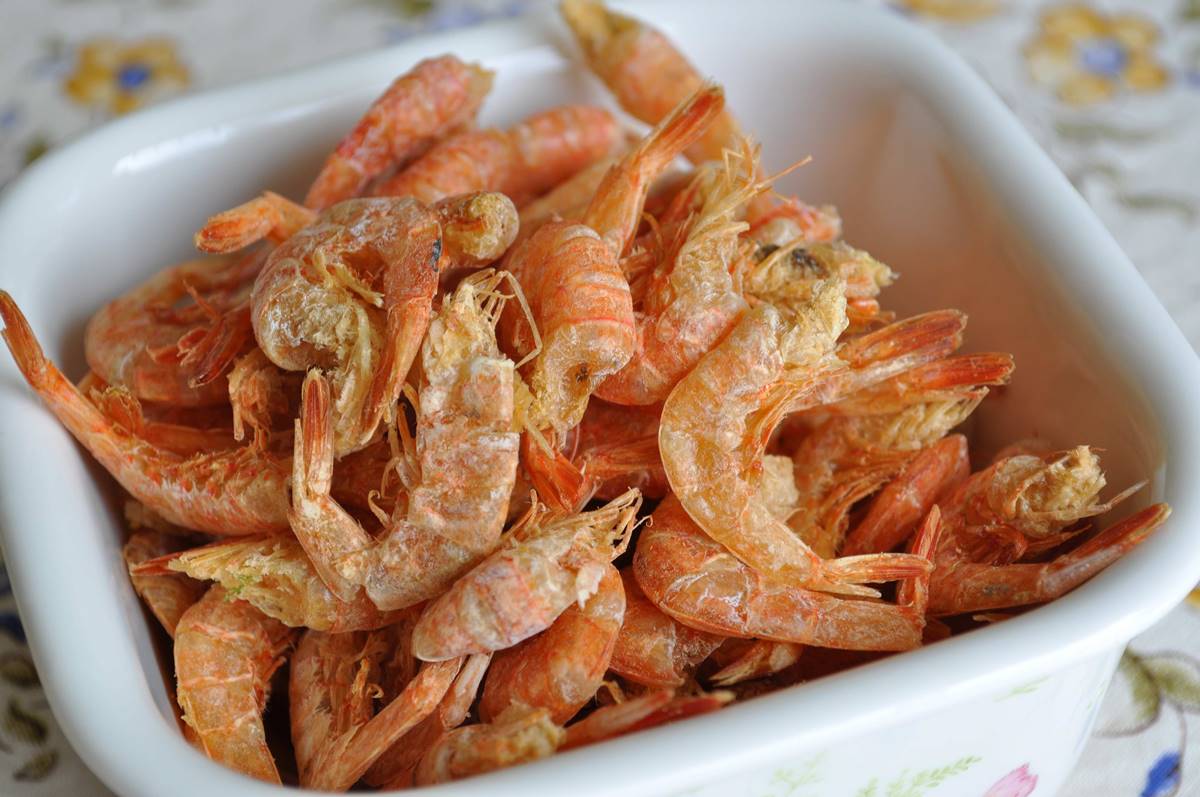Hey there! I’m super excited to share everything I know about eating dry shrimp. As someone who’s been cooking with these little umami bombs for years I’ve learned all the tricks to make them taste amazing. Let’s dive right in!
What Are Dry Shrimp Anyway?
Dry shrimp are basically sun-dried or dehydrated shrimp that pack a powerful punch of flavor. Think of them as nature’s flavor enhancers! There are two main types you’ll find:
- Regular dry shrimp: These orange-colored beauties have their heads and shells removed before drying
- Papery dry shrimp: Tiny whole shrimp dried with heads and shells intact – they’re super crispy!
How to Choose the Best Dry Shrimp
When I’m shopping for dry shrimp, here’s what I look for:
- Vibrant orange color for regular ones
- Beige color for papery ones
- No moisture or sliminess
- Crisp, dry appearance
- Intact packaging without tears
- Valid expiration date
Storage Tips That Actually Work
Listen, proper storage is crucial! Here’s what I do:
- Transfer opened dry shrimp to an airtight container
- Keep them in the refrigerator (lasts 2-3 months)
- For longer storage, pop them in the freezer (up to 6 months)
- Check regularly for any signs of spoilage
The Right Way to Prepare Dry Shrimp
Rehydrating Regular Dry Shrimp
- Place dry shrimp in a bowl
- Cover completely with hot water
- Soak for 15-30 minutes until pliable
- Change water once or twice to reduce saltiness
- Pro tip: Don’t throw away the soaking water – it’s packed with flavor!
Using Papery Dry Shrimp
These little guys are ready to use straight from the package – no soaking needed!
My Favorite Ways to Cook with Dry Shrimp
1. Soups and Broths
- Add whole rehydrated shrimp
- Use soaking liquid for extra flavor
- Perfect for noodle soups
2. Stir-fries
- Chop rehydrated shrimp
- Fry with aromatics
- Great with veggies like bok choy
3. Dumplings and Stuffings
- Mince finely
- Mix with other filling ingredients
- Adds amazing umami depth
4. Rice and Noodle Dishes
- Sprinkle on top
- Mix into fried rice
- Add to noodle dishes
5 Quick and Easy Recipes to Try
-
Simple Shrimp Fried Rice
- Rehydrated dry shrimp
- Day-old rice
- Eggs
- Veggies
- Soy sauce
-
Umami-Rich Veggie Stir-fry
- Chopped dry shrimp
- Mixed vegetables
- Garlic and ginger
- Oyster sauce
-
Comforting Noodle Soup
- Whole dry shrimp
- Your favorite noodles
- Bok choy
- Broth
-
Easy Dumpling Filling
- Minced dry shrimp
- Ground pork
- Napa cabbage
- Seasonings
-
Quick Congee Topping
- Crushed dry shrimp
- Green onions
- Sesame oil
- White pepper
Common Questions I Get Asked
Q: Can I eat dry shrimp straight from the package?
A: Nah, they’re super salty and tough. Better to rehydrate or cook them first!
Q: What if I’m allergic to fresh shrimp?
A: Stay away from dry shrimp too – they contain the same allergens.
Q: How do I know if they’ve gone bad?
A: Look for funky smells, mold, or major color changes. When in doubt, throw it out!
Pro Tips from My Kitchen
- A little goes a long way – they’re pretty powerful!
- Try toasting them briefly for extra flavor
- For stir-fries, I sometimes skip soaking for extra texture
- Mix and match with other umami ingredients
- Keep some frozen for emergency flavor boosts
Substitutes When You Can’t Find Dry Shrimp
If you’re in a pinch, try:
- Fish sauce (use sparingly!)
- Dried scallops
- Shrimp paste
- Mushroom powder for vegetarian options
Would you like me to explain any part in more detail? Drop a comment below!

What are sakura ebi?
Sakura ebi / tiny dried shrimps (æ¡ãã³ in Japanese) are small shrimp that have been dried in their shells. As these are full of flavor, adding them can create delicious dashi (soup stock). Sakura ebi is a unique variety, not to be confused with small caridea shrimp or acetes shrimp. These can also be used in “okonomi-yaki” batter or in deep-fried foods. The name sakura ebi originates in their color, the natural pink hue is reminiscent of Japans sakura cherry blossoms.
Sakuraebi is rich in protein and calcium which contribute to healthy bones and teeth. It also contains zinc, vitamin E, vitamin D, folic acid, and other B vitamins, making it rich in nutrients essential for maintaining and improving health. Sakuraebi is rich in vitamin B12, which is involved in blood production, and iron, which helps prevent anemia. In addition, sakuraebis red pigment astaxanthin has a strong antioxidant effect, so it is expected to suppress cellular oxidation. Sakuraebi can be added to dishes as-is, so your meals nutritional value can increase with that simple hack. It is effective to eat sakuraebi alongside vitamin C to help absorb iron, calcium, vitamin B12, and folic acid, so we recommend recipes that combine the shrimp with green peppers, kale, cabbage, potatoes, and other foods that are rich in vitamin C.
